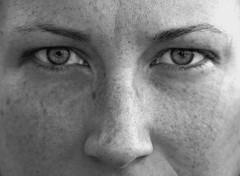 No matter what city you live in you will see homeless people on the streets. The man standing on the side of the road with a “Will work for food,” sign is a sight we all are familiar with, as is the huddled figure sleeping in a doorway somewhere near you.
No matter what city you live in you will see homeless people on the streets. The man standing on the side of the road with a “Will work for food,” sign is a sight we all are familiar with, as is the huddled figure sleeping in a doorway somewhere near you.
My grandmother used to point out people living on the street and say, “There, but for the grace of god, go I”, She would then stop and give them some spare change.
My grandmother’s words truly resonate with me these days. Bobbie Ibarra, Executive Director of the Miami Coalition for the Homeless, recently noted a substantive change in the demographics of the homeless these days:
Families are a newer face to homelessness that run the gamut, due to situations regarding financial instabilities, not having access to health care, unemployment, lack of affordable housing and the recent trend of foreclosures. However, the youth have their own face to homelessness as well, such as those who either run away from home or age out of the foster care system with no guidance and resort to ‘couch surfing.’ This is a group that is blending in with their counterparts in our school systems, making their situation invisible.
These days more and more of the homeless defy the stereotypes we have adopted (as happens all too often with stereotypes). The economic chaos of the past few years has thrust many families and individuals onto the streets. The man shamefacedly asking for spare change on the corner could well have been living in a large suburban home a mere few weeks ago.
There are many others who have ended up, like the students Ms. Ibarra spoke of above, living with friends or family because they can no longer afford a home of their own. One small step away from the streets but lacking resources of their own, they are the invisible faces of the homeless problem, and their numbers are also growing.
Writer Stephen Smith recently wrote about the homlessness issue in the U.K. In his blog post he noted the fine line so many tread between having a roof and living on the streets:
In 1990, the late, great Bill Hicks said ‘anybody can be a bum; all it takes is the right girl, the right bar and the right friends’.
Hicks always had a hard core of truth in his humour, recognising here that people can – and do – go from affluence and security to poverty, homelessness and insecurity faster than you can say ‘austerity budget’.
How are people left homeless? Relationships breaking up, substance addictions, serious illness, escaping abusive relationships, severe debt, leaving the Services or coming out of prison can all bring homelessness, as well as something we can all relate to: losing your job. No job, run up debt, you can’t meet the mortgage or rent. Bang! Of course, you may be lucky enough to have friends and family who’d look out for you – but many people don’t.
Ask yourself how long you would be able to make your rent or mortgage if your income stopped tomorrow? That’s how close you are to being classed as homeless.
With unemployment numbers continuing at absurd levels there are many of us who know the fear of not being able to make the bills. Living on the street is a specter in the lives of every household that is living “paycheck-to-paycheck.” I personally know of five people who in the last week have been let go from their jobs with no warning, in one case because the entire university department was dissolved (20 jobs gone in a flash). Now they are wondering what their options are and how long they will make it.
Smith’s words cut to the core. Read them again and think about it.
Ask yourself how long you would be able to make your rent or mortgage if your income stopped tomorrow? That’s how close you are to being classed as homeless.
The homeless person on the street could be one of your friends or family. It could, indeed, be you. The truly horrible part is how many families and children are living on the streets, “sleeping rough” as they say in the U.K.
Our first book, downTown:U.S.A.: A Personal Journey with the Homeless, focused on the people who suffer on our streets every day. Using their words and images, we have tried to show people the human depth behind the stereotypes in the hope of inciting change.
Image by Andrew Morrell Photography, used under its Creative Commons license









